Water Well Rehab on a Municipal Scale
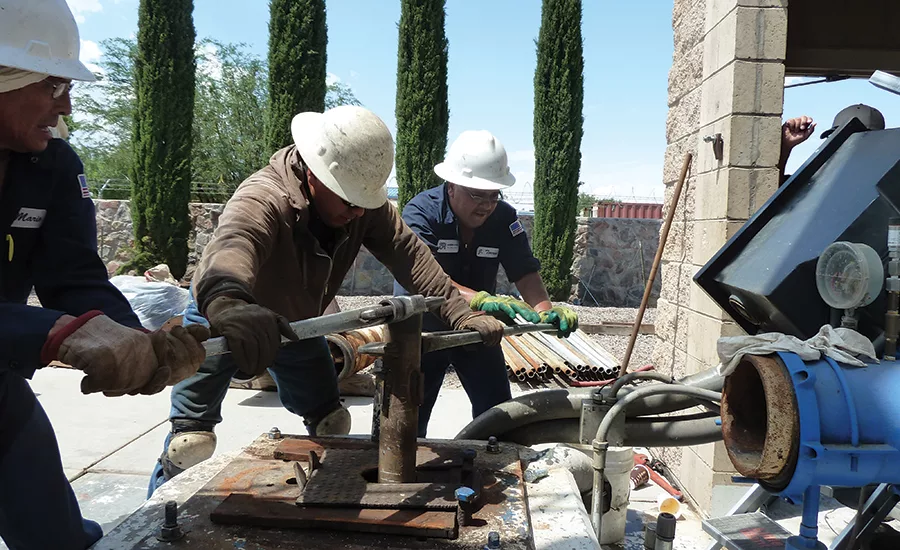
Groundwater professionals recently rehabilitated a municipal water well in Las Cruces, N.M., that was producing excessive sand. Source: John Shomaker and Associates photos
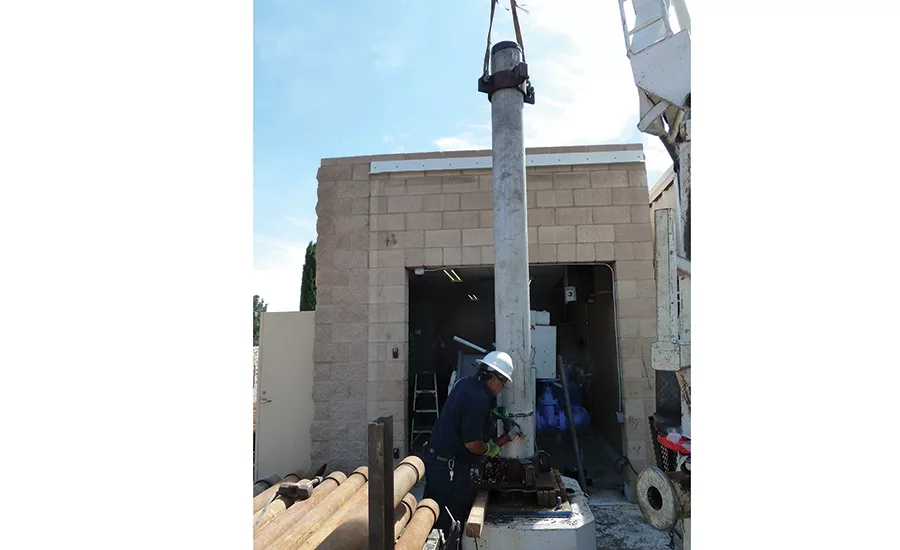
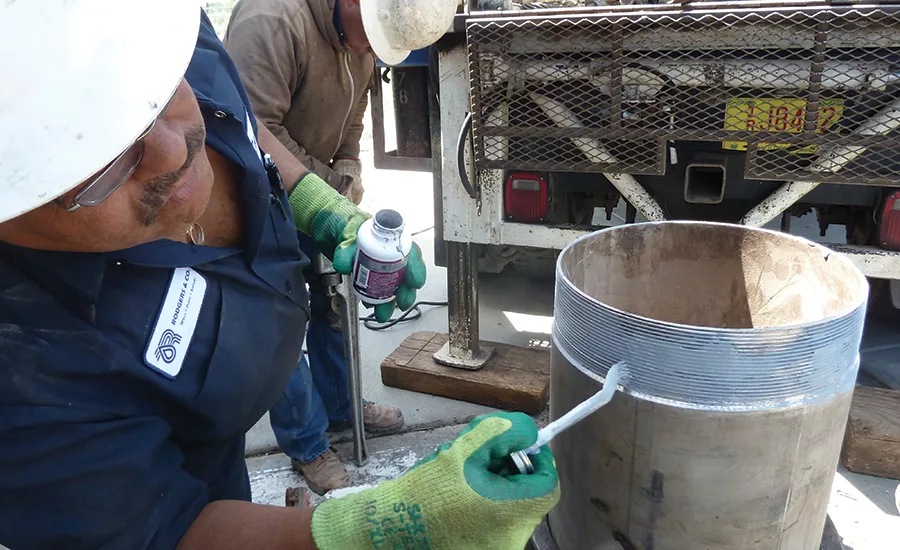
Municipal wells can be much more expensive than smaller residential wells to rehab, due to the increased labor and product their large size calls for. Source: John Shomaker and Associates
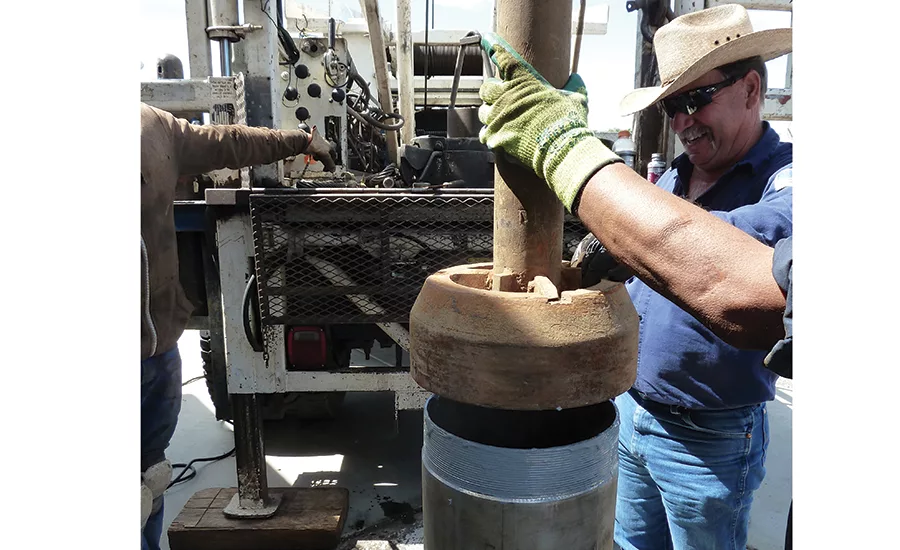
One of the most common issues Jeff Watson faces is clients who expect their well to be rehabbed after letting problems with it build up for years, making reconstruction the only solution. Source: John Shomaker and Associates photos
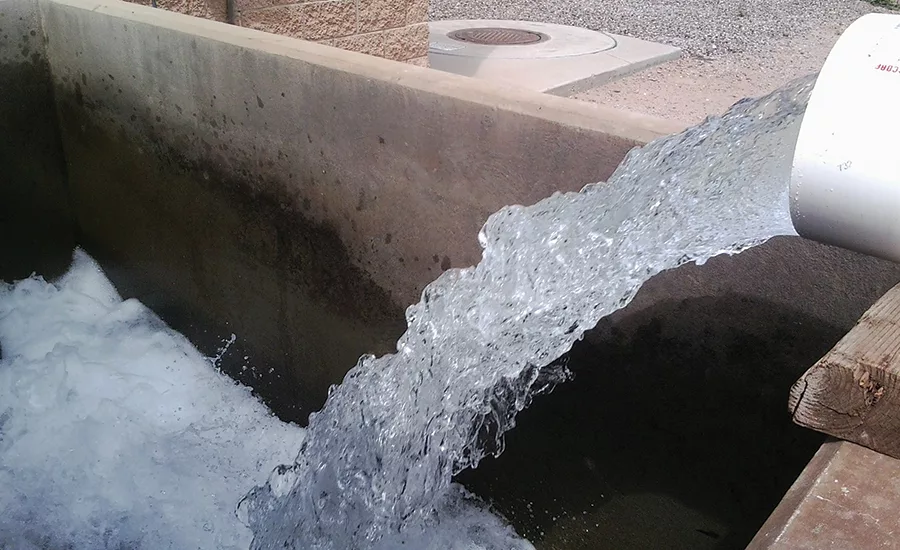
When a municipal water well that helps bring potable water to more than 100,000 people starts to underperform, it’s a big deal. That scenario recently played out in Las Cruces, N.M., when the city had had it with one of its wells that was producing excessive amounts of sand.
Article Index:
In its effort to get to the bottom of the issue, Las Cruces contracted Albuquerque, N.M.-based hydrogeological consulting firm John Shomaker and Associates to map out a repair plan. The city then contracted Rodgers and Company, a water well drilling specialist, with offices in Albuquerque and Las Cruces, to service the well.
“It had always posed a problem in terms of sand production. It was a nuisance to them,” says Rodgers and Company’s Jeff Watson, who served as project manager. “They had to replace piping, valves, meters, [and had] complaints from customers and maintenance because of the sand.”
Rehabbing the Well
The original well is a 16-inch-diameter cased well, about 650 feet deep and gravel packed. It is only about 10 to 15 years old, according to Watson, who says that despite the sanding issue, it was structurally sound going into the project.
Prior to taking any steps toward well redevelopment, a video survey of the well was carried out. The initial assessment also included a stepdrawdown pumping test, which involved pumping the well at various rates to be able to calculate the corresponding drawdown at various pumping rates. Sand production was also calculated to determine if there was a particular rate at which the well produced more or less sand.
The next step involved the implementation of well development procedures where crews reverse-airlifted and swabbed out the entire well at 20-foot intervals, documenting how much sand was produced in each interval. Once the pump was reinstalled, step-drawdown pumping at approximately the same rates as the initial test was carried out, comparing the drawdown and sand production at each pumping rate.
“What we found was that, although the sand production did decrease some, it was still quite excessive,” says Roger Peery, principal hydrogeologist at John Shomaker and Associates, who developed the well rehabilitation plan.
At that point, he recommended implementing the plan that was ultimately followed through, which was the installation of a stainless steel wire-wrapped screen liner inside the existing well, and the installation of filter gravel between the initial well screen and the new well screen to control sand production.
The drilling crew of about two to three used a Smeal 12T pump rig for the workover, development and liner installation. They installed 0.040-inch slot wire-wrapped screen only in the perforated interval of the well so as to not restrict the size of pump the city could install, Watson says. The liner was terminated at 280 feet, so the original 16-inch diameter was maintained from the top of the well down to 280 feet. The well site is located at the south end of city limits, in the Mesilla Valley, and, aside from the pump house and fencing surrounding it, Watson says obstructions were not much of a challenge. The entire project, from planning to completion, lasted approximately three months and the field implementation portion took around two weeks, Peery says.
Results
“With the planning process, you come up with a plan that you want implemented, but you don’t know if your plan is going to be successful or not, so there’s some level of risk that the idea you come up with won’t work and there’s no way to test that other than to just implement it,” Peery says.
Fortunately, this particular rehabilitation project went about as smoothly as it could, with the sand problem being addressed and the well making 1,900 gallons a minute in the end, producing the same amount of water as before the screen was installed. Considering the fact that the well screen and filter gravel make the water’s path to the final well casing more challenging, such a turnout is ideal. Even better, the city was able to retain the original pump and equipment, rather than having to resize or downsize it in response to a drop in capacity.
“This one was extremely successful,” says Peery, who has been doing this kind of work for nearly 30 years. “We have had some in the past where we did something similar to this and the well production decreased by about 50 percent. So this was an extremely successful project.”
Monitoring Matters
While this particular solution proved to be smooth sailing and straightforward, Watson says that isn’t always the case. Often times, he says, rehabilitation projects are much more complicated. “You’ll have biofouling issues or mineral incrustation issues that are affecting production, or age of the well, where conditions of casing and/or screen are deteriorating, so there are structural concerns that have to be dealt with.”
But, he says, it can be even worse than that and often is, because clients tend to let a well problem linger for years and get progressively worse, to the point of little or no production, before picking up the phone. Watson says it’s the most common problem he faces with regard to well rehabilitation. “Because maintenance issues have either been ignored or put off for whatever reason, the problem with the well gets worse and worse and worse and worse, and the worse it is, the more difficult it is to reverse those adverse conditions.”
For this reason, it is important that groundwater professionals explain the importance of implementing a water level monitoring program with clients.
Peery recommends that every month or, at most, every three months, well owners measure the pumping water level and record the corresponding pumping rate. They should also collect non-pumping water level measurements. If the non-pumping water level changes don’t vary by much over time, but the pumping water level does, and they see a decrease in the production rate, he says they’ll be alerted to well efficiency problems early on and know to call for rehabilitation services.
Watson agrees that monitoring production is key, because without doing so customers often find themselves having to pay for the reconstruction of the well altogether, which is much more complex for drillers and much more expensive in the end.
“The earlier problems are identified, the earlier they can be addressed and the easier it is to correct them. Unfortunately, a lot of times people don’t pay attention to that. They just run their wells until they quit. … Then, at that point, it’s always more difficult to have a successful rehabilitation and sometimes it’s too late to get the well back to where they need it to be,” he says.
Well testing after a rehabilitation job has been completed is just as important for groundwater professionals to employ, because the results indicate whether or not the job is actually done. “You need to do a pumping test afterwards to be able to measure the success of your rehabilitation. So if you’ve restored the production, then obviously you’ve done the right thing. If all you did was clean the screen where it looks better, but your production hasn’t increased, then obviously you need to come up with a different plan for rehabilitation that restores production,” Peery says.
Never Underestimate
Having to start over and try something new is not at all unusual when it comes to water well rehabilitation. “There are no two wells that are exactly alike and, therefore, there’s no way to determine, upfront, what the results of the rehabilitation are going to be,” Watson says.
There is a wide range of techniques and cleaning products available for wells, depending on the problem, so communicating the complexities and potential negative results from rehabilitation with customers is important. The process can be very expensive and labor intensive, especially with large, municipal wells. Bigger wells, even if only in need of cleaning, call for higher product volumes, so the budget to rehabilitate a municipal well can exceed $50,000 pretty easily, Watson says.
That is why, he says, the best advice he can offer other groundwater professionals with regard to municipal well rehabilitation is to humble themselves and their clients from the get-go.
“Don’t underestimate the effort required to tackle a large-scale well rehabilitation project. It can be resource intensive, tying up your rig or your crews for days or weeks. Don’t underestimate the cost, the well cleaning products and the volume, the amount of products it could require to adequately treat the well.”
Looking for a reprint of this article?
From high-res PDFs to custom plaques, order your copy today!








